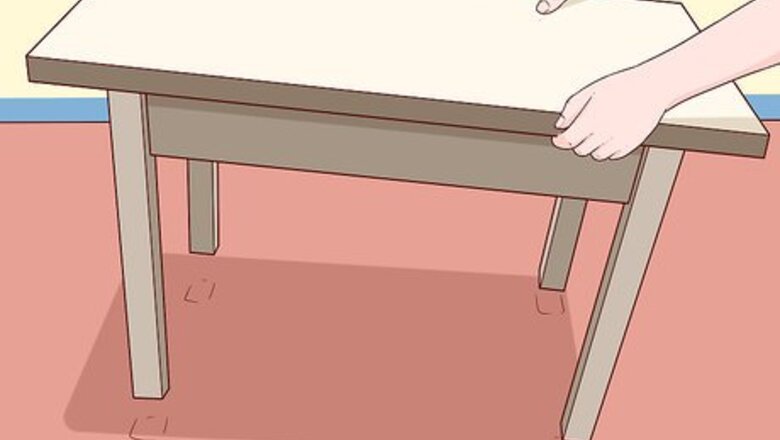
views
Removing Dents from Synthetic Fibers
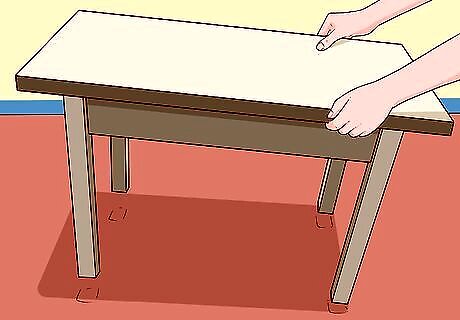
Remove the furniture. You can't address dents in the carpet if the furniture is still there. Move the furniture to expose the dent and either rearrange the room to find a new home for the piece or take it out of the room while you work. When the carpet is exposed, check the label to determine what kind of material it is. Synthetic fibers can be fixed using the cold ice cube method. Common synthetic carpet fibers include nylon, olefin, and polyester.
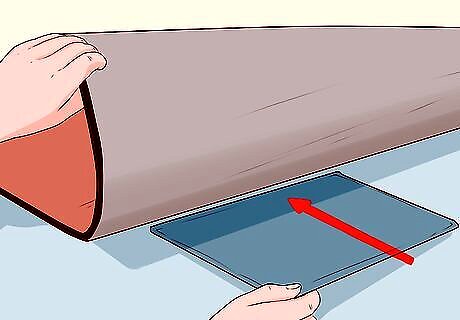
Protect the floor underneath. This is important if you're removing dents from a rug or area carpet where there's a wood or other finished flor underneath. To protect the floor, place a towel, rag, or other absorbent material under the carpet where the dent is that you'll be treating.
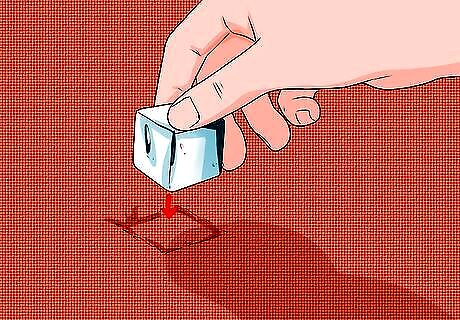
Fill the dent with ice cubes. Use as many ice cubes as you need to fill the dent completely. As the ice cubes melt, the compressed carpet fibers will slowly absorb the water. The more water the fibers absorb, the fuller and more swollen they’ll become, and this will reduce the indentation. If you're removing multiple dents from the carpet, try out the method first on a dent that’s in an inconspicuous area to test the carpet for colorfastness.
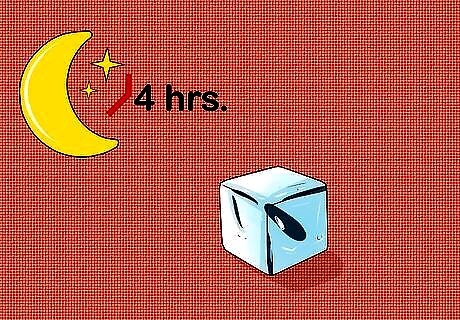
Leave the dent overnight. Let the ice cubes melt and leave the carpet to absorb the water from the ice overnight, or for at least four hours. This will give the fibers plenty of time to swell and start regaining their original shape and plumpness.
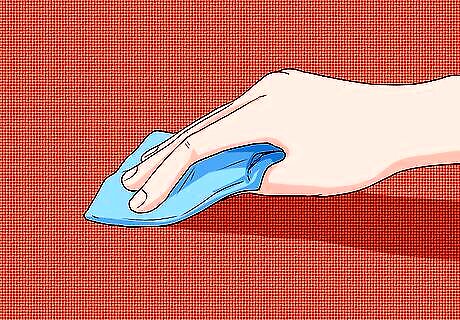
Blot the area dry. When the carpet has had several hours to absorb the water, use a clean towel to blot the wet area and absorb any excess. The carpet doesn’t have to be completely dry, but it shouldn’t be any wetter than slightly damp. Switch to a dry area of the towel as necessary to keep absorbing more water. When you’ve absorbed as much water as you can, remove the towel that’s protecting the floor underneath.
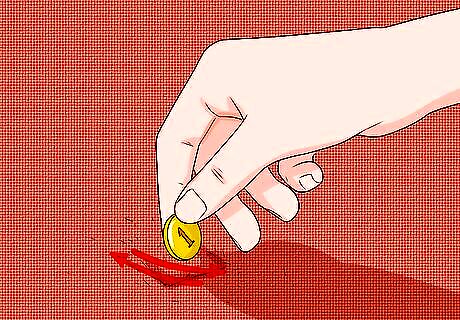
Fluff the fibers. Now that the fibers have regained their original plumpness, you can fluff them back into shape to remove all traces of the dent. Use your finger, a small coin, or a spoon to brush and fluff the carpet fibers in multiple directions so they stand up tall and straight like the rest of the fibers. You can also use a carpet brush or carpet rake to fluff the fibers and remove the dent.
Removing Dents from Natural Fibers
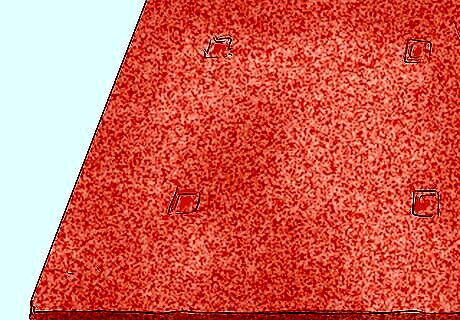
Expose the dents. If the furniture that caused the dents is still covering them, remove the furniture so you can address the dents. When the carpet is free, check the care label to determine what type of fiber the carpet is made from. Dents in natural-fiber carpets are best removed with steam. Common natural fibers for carpets include wool, sisal, and cotton.
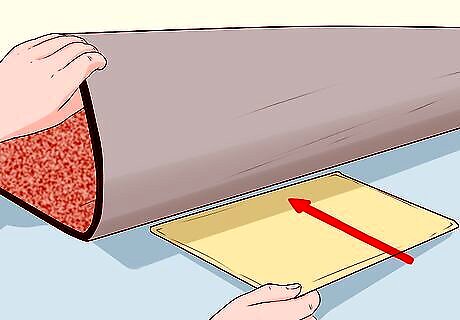
Protect the floor. The best way to remove dents from natural fibers is with steam and heat, but this can damage the floor underneath if the floor is finished. To protect the floor under the carpet or rug, place a towel or other absorbent material between the carpet and the floor.

Apply steam to the area. Fill a steam iron with water. Turn the iron to the highest setting and allow it to heat up. Hold the iron 4 to 6 inches (10 to 15 cm) over the carpet and apply a steady jet of steam to the affected area. Continue applying steam until the carpet is moist and hot. Use a spray bottle to moisten the dent with water if you don’t have a steam iron. Then, use a blow dryer on the hottest setting to heat the area and steam the carpet. Hold the blow dryer 4 to 6 inches (10 to 15 cm) above the carpet, and run the blow dryer until the carpet is hot.
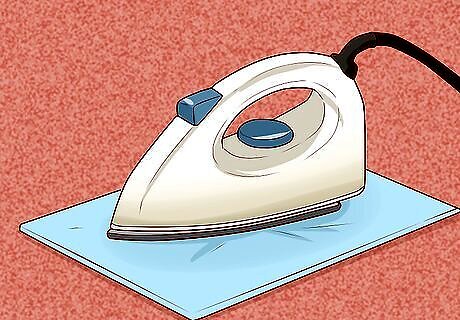
Apply more direct heat for stubborn dents. Soak a tea towel with water and wring out as much excess as possible. Lay the damp towel over the dent. Turn the iron on to the medium setting and let it heat up. Place the iron on the towel and apply gentle pressure as you run the iron over the towel for a minute. Remove the iron. Leave the towel to dry in place over the dent.

Dry and fluff the fibers. Use a clean towel to blot the carpet dry. To return the plumped fibers to their natural shape and position, use your fingers, a brush, spoon, or carpet rake to fluff and brush the fibers. As you fluff, the dent will disappear.
Preventing Carpet Dents
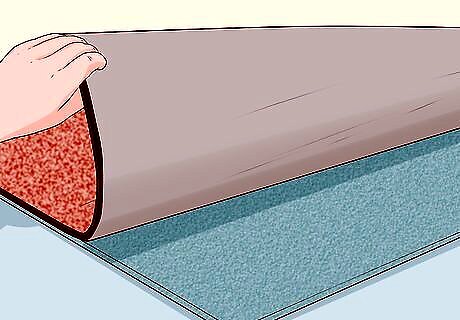
Use carpet pads. Carpet pads don’t just make your carpets more comfortable to walk on, because they can also protect your carpet. When you place a heavy piece of furniture on the carpet, the pad will help absorb the weight, and help prevent dents from forming. Carpet pads come in different thicknesses, and it’s important that you choose the right pad for the type of carpet you have. Typically, household carpeting pads should be between ¼ inch and 7/16 inch (6.3 and 11 mm) thick, and should have a density of about 6 pounds (2.7 kg) per cubic foot (30 cm).
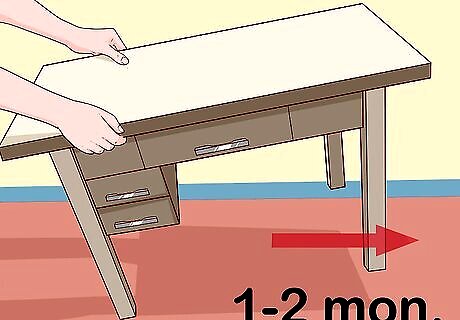
Move furniture regularly. Furniture dents form because heavy furniture compresses the same fibers in the same way for too long. An easy way to stop this from happening is to move the furniture often so that it doesn’t sit on the fibers long enough to compress them. Move the furniture by about an inch (2.5 cm) every one to two months to stop dents from forming. This method works best with small furniture and furniture that’s on casters. When you keep heavy furniture on an area rug, dents form on it. You can do thorough vacuuming or have the rug professionally cleaned. It can help to fluff the carpet and remove the dents because the fibers are squished. If it does not work, get a little tool and fluff up each dent. It is a small hard tool like a paper clip.
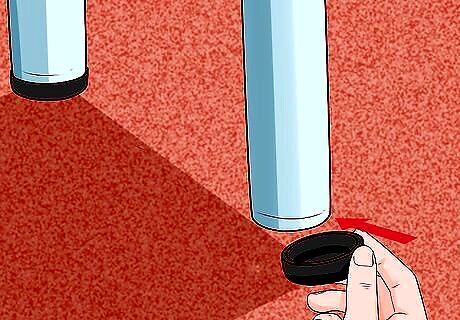
Use cups or gliders. Furniture cups and gliders are pads that you place under furniture feet. These spread out the weight of the furniture more evenly among more fibers. That way, the furniture isn't just compressing a few fibers, so dents don’t form. Cups tend to slide under furniture feet, and don’t get attached to the actual feet. Gliders are also designed to help furniture slide without causing scrapes. They often have sticky backs that attach to the feet, or screws or pins that get inserted into the wood.
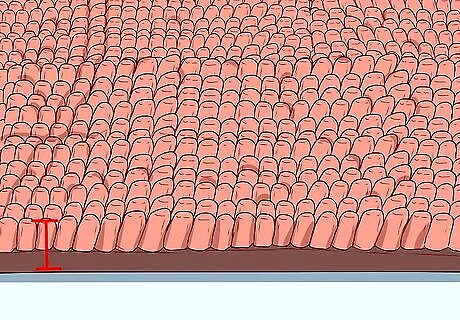
Choose carpeting with a shorter pile. Carpets with shorter pile (shorter fibers) are generally easier to maintain and clean, and they aren't as dent-prone as carpets with longer pile. When it comes time to re-carpet or change your rugs, look for shorter fibers as opposed to longer and shaggier ones.




















Comments
0 comment